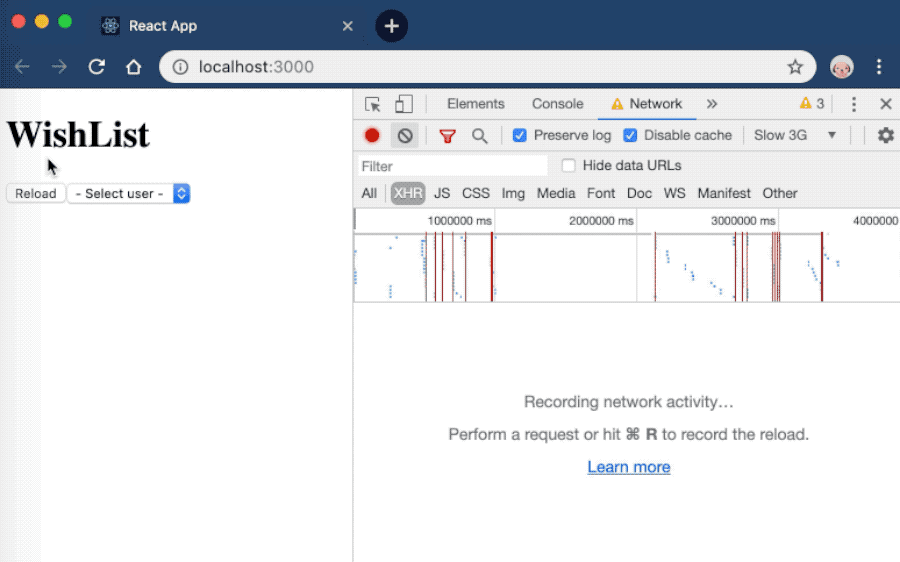이전글 "[React] Mobx-state-tree 학습하기 #14 : 서버에서 데이터 가져오기"에서 이어지는 내용입니다. 참고로 이 포스팅은 제가 학습한 내용을 노트에 정리하듯이 기록하여 올리는 글이기 때문에 보팅 안해주셔서 됩니다. 많은 분들이 코딩에 흥미를 느꼈으면 좋겠습니다. ㅋ

Use Volatile State and Lifecycle Methods to Manage Private State
- 강의 링크: https://egghead.io/lessons/react-use-volatile-state-and-lifecycle-methods-to-manage-private-state
15번째 레슨입니다. MST에는 매우 유니크한 기능이 있습니다. It allows you to capture private state on models, and manage this state by using lifecycle hooks. For example by setting up a WebSocket connection and disposing of the connection automatically as soon as the instance gets removed from the store. In this lesson, we will leverage cancellable fetches to abort in-flight requests when appropriate
우리는 이번 레슨에서 다음을 배우게 됩니다.
window.fetch요청을 중단하는 방법.- Storing private, volatile, internal state in the function closure
- A second life-cycle hook:
beforeDestroy
이번에는 새로고침 버튼을 추가하고, 새로고침 버튼을 누를 때마다 서버에서 데이터를 받아오도록 해보겠습니다.
Group.js 파일을 수정합니다. Group 모델에 reload 액션을 추가합니다.
src/models/Group.js
1 | export const Group = types.model({ |
그리고 화면에 Reload 버튼을 추가합니다. Reload을 누르면 group의 reaload 액션을 호출할 것입니다.
src/components/App.js
1 | class App extends React.Component { |
이제 서버에서 데이터를 다시 로드 할 수 있습니다. 개발자 도구에서 네트워크 요청을 살펴보면 데이터를 멋지게 가져 오는 것을 볼 수 있습니다. 사실 문제가 하나 있습니다. 리로드 버튼을 많이 클릭하면 많은 요청이 진행됩니다. 다시 요청할 때 이전 요청을 취소하면 좋을 것입니다.
새로운 요청이 들어오면 현재 요청은 중단되어야합니다. Fetch API에는 이를 지원하는 라이브러리가 있습니다. 이를 수행하는 방법은 AbortController를 작성하는 것입니다.
fetch를 생성할 때 signal를 전달합니다. AbortController에서 나온 signal을 Fetch API에 바인딩합니다. 이제 AbortController에서 abort을 호출하면 Fetch API가 취소됩니다.
요청이 중단되면 에러가 발생할 것입니다. try / catch를 사용하여 요청이 중단되었음을 알 수 있습니다. 그렇지 않은 경우에만 성공으로 처리합니다.
다음과 같이 AbortController 를 사용합니다.
src/models/Group.js
1 | export const Group = types |
그리고 어떤 이유에서 group이 메모리에서 언로드되면 우리는 보류중인 요청을 중단 할 수 있어야 합니다. 여기에는 beforeDestroy 후크를 활용할 수 있습니다.
1 | export const Group = types |
이제 많은 요청을 실행하면 마지막 요청만 완료되고 다른 요청들은 중단됩니다. 콘솔 로그를 확인하면 이것이 우리가 기대했던 동작을 확인할 수 있습니다. 새로운 요청이 발생하여 일부는 성공하고 일부는 중단된 것을 볼 수 있습니다.
